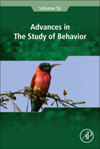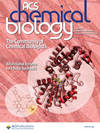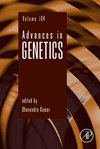期刊简介
New Phytologist publishes excellent, novel, rigorous and timely research and scholarship in plant science and its applications. Falling within four sections – Physiology & Development, Environment, Interaction and Evolution – articles cover topics that range from intracellular processes through to global environmental change. Cross-disciplinary approaches are particularly encouraged but for guidance the journal is organized as below. We recognize that techniques from molecular and cell biology, and functional genomics through to modelling and system-based approaches will be applied across the whole spectrum of plant science:• Physiology & Development: intra/inter-cellular signalling, long-distance signalling, physiology, development, eco-devo – phenotypic plasticity, transport, biochemistry.• Environment: global change and Earth system functioning, environmental stress, ecophysiology, plant–soil interactions, heavy metals.• Interaction: plant–biotic interactions (including viruses, prokaryotes, oomycetes, fungi/mycorrhizas, viruses, nematodes and insects), symbionts, endophytes, pathogens, plant microbiome, fungal genomics, multitrophic systems, plant–microbe–soil interactions.• Evolution: molecular evolution, population or quantitative genetics, mating systems, phylogenetics, speciation, plant–enemy coevolution, evo–devo.
《新植物学家》出版优秀、新颖、严谨和及时的植物科学及其应用研究和学术成果。文章分为四个部分--生理学与发育、环境、相互作用和进化--涵盖了从细胞内过程到全球环境变化的主题。特别鼓励采用跨学科方法,但为了便于指导,该杂志的组织结构如下。我们认识到,从分子和细胞生物学、功能基因组学到建模和基于系统的方法,这些技术将应用于植物科学的整个领域:·生理学与发育:细胞内/细胞间信号传导、长距离信号传导、生理学、发育、生态发育表型可塑性、运输、生物化学。·使用环境:全球变化和地球系统功能、环境压力、生态生理学、植物-土壤相互作用、重金属。·交互作用:植物-生物相互作用(包括病毒、原核生物、卵菌、真菌/菌根、病毒、线虫和昆虫)、共生体、内生菌、病原体、植物微生物组、真菌基因组、多营养系统、植物-微生物-土壤相互作用。·进化:分子进化,群体或数量遗传学,交配系统,种系发生学,物种形成,植物-天敌共同进化,进化-进化。
《NEW PHYTOLOGIST》期刊已被查看: 次









